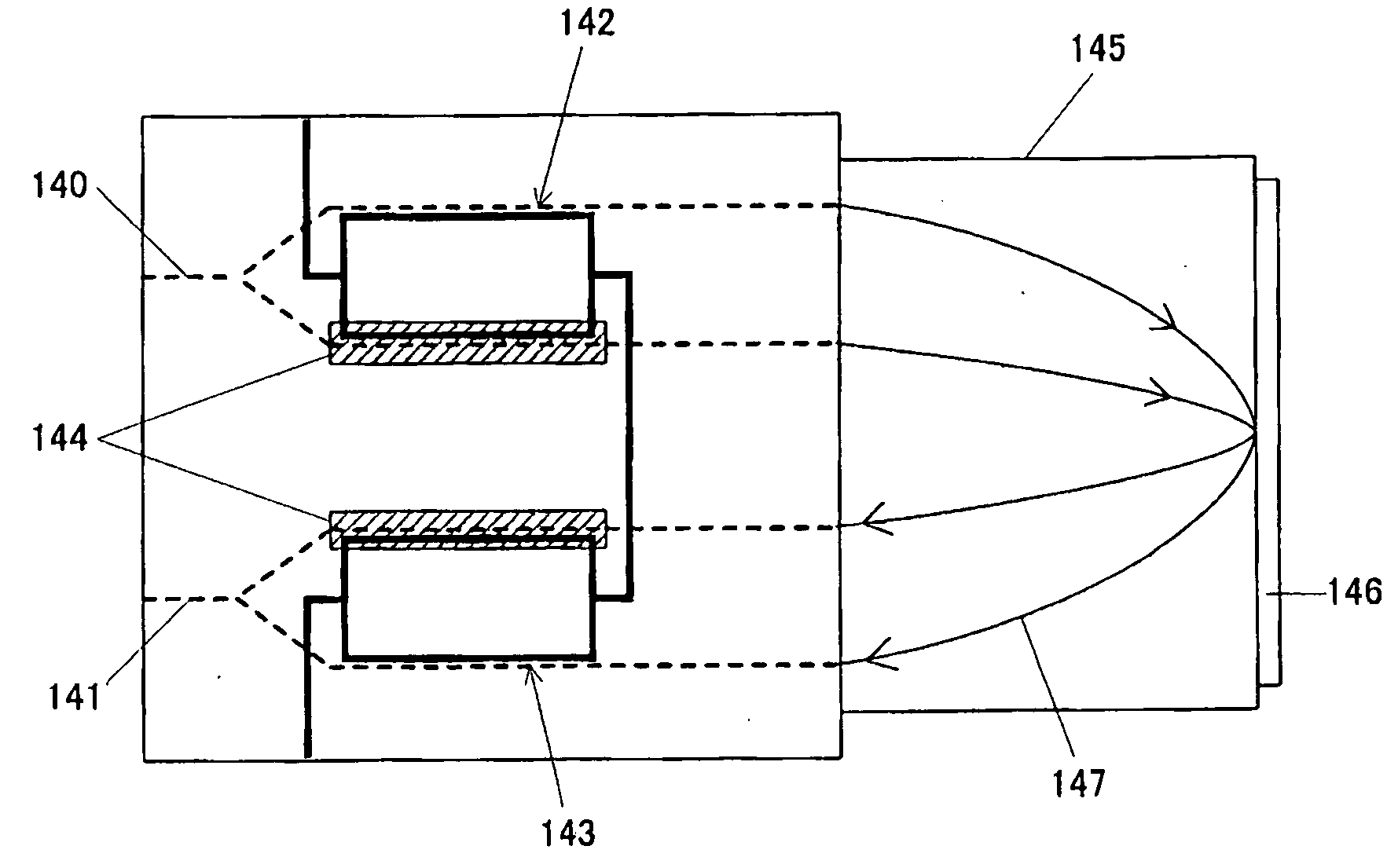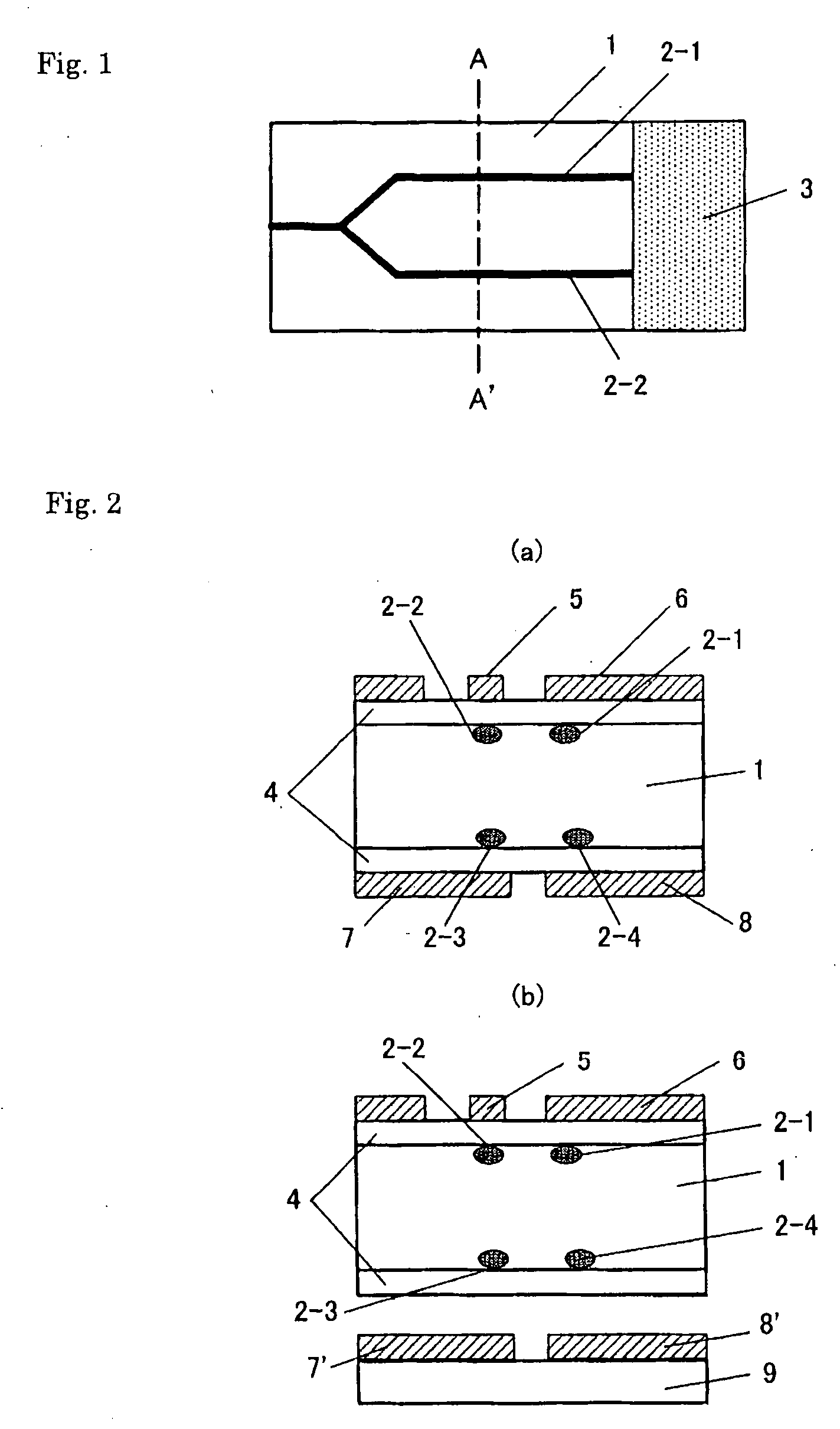Optical device
a technology of optical modulator and optical waveguide, which is applied in the field of optical elements, can solve the problems of limited size of the device using the optical modulator, increased production cost, and increased size of the optical modulator
- Summary
- Abstract
- Description
- Claims
- Application Information
AI Technical Summary
Benefits of technology
Problems solved by technology
Method used
Image
Examples
second embodiment
[0149]FIG. 18 shows the optical element using the branching and confluence lines according to the present invention, wherein MZ type optical waveguides 140 and 141 are turned back by a GRIN lens 145 and a reflecting mirror 146 attached to one side edge of said lens. The light wave exiting from an optical waveguide 140 at the input side follows the locus shown by 147 and enters an optical waveguide 141 at the output side. The modulating electrode having two branching and confluence lines 142 and 143 is placed on each optical waveguide 140 and 141 like FIG. 17. FSP reversal regions 144 are also formed on one part of each optical waveguide to be operated like FIG. 17.
third embodiment
[0150] Subsequently, the optical element using the branching and confluence lines according to the present invention is shown in FIG. 19.
[0151]FIG. 19 shows the optical waveguide where MZ type optical waveguides 150 and 151 are located in series on substrate 101. Using such several MZ type optical waveguides enables the light wave being optical-modulated in one MZ type optical waveguide to be again optical-modulated by another MZ type optical waveguide. Especially when it is modulated by the same modulating signal, it is possible to improve extinction ratio related to the modulation.
[0152] In FIG. 19, two branching and confluence lines 152 and 153 are located corresponding to the interaction part of each MZ type optical waveguide. FSP reversal regions 154 and 155 are also formed on one part of each branching optical waveguide. Because the single middle line connects each branching and confluence line 152 and 153, it becomes easy to wire the lines as well as it becomes possible to a...
fourth embodiment
[0154]FIG. 20 shows the optical element using the branching and confluence lines according to the present invention, wherein two MZ type optical waveguide of FIG. 19 are configured by the turnback. A reflecting mirror 166 is formed at the turnback. Branching and confluence lines 162 and 163, and FSP reversal regions 164 and 165 are formed on each MZ type optical waveguide 160 and 161. Further, it is also possible to form a delay line 167 for the purposes of adjusting the timing between the light wave entering the next MZ type optical waveguide 161 and the modulating signal.
PUM
| Property | Measurement | Unit |
|---|---|---|
| phase | aaaaa | aaaaa |
| frequency | aaaaa | aaaaa |
| electrical connection | aaaaa | aaaaa |
Abstract
Description
Claims
Application Information
 Login to View More
Login to View More - R&D
- Intellectual Property
- Life Sciences
- Materials
- Tech Scout
- Unparalleled Data Quality
- Higher Quality Content
- 60% Fewer Hallucinations
Browse by: Latest US Patents, China's latest patents, Technical Efficacy Thesaurus, Application Domain, Technology Topic, Popular Technical Reports.
© 2025 PatSnap. All rights reserved.Legal|Privacy policy|Modern Slavery Act Transparency Statement|Sitemap|About US| Contact US: help@patsnap.com



